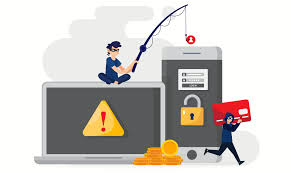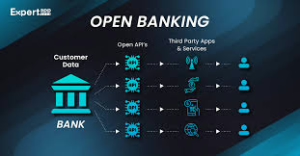In today’s world, where our daily interactions are deeply woven into the fabric of digital communication, the peril of email fraud looms more significant than ever. It’s a reality that demands our utmost attention and caution. Recently, Teresa W. recounted a harrowing experience that perfectly illustrates the very real dangers posed by business email compromise (BEC).

Teresa began her story with a sense of disbelief as she recounted a near-catastrophic event that almost cost her company an enormous sum of money. It all started with a phone call from their banker, who delivered alarming news: she had noticed suspicious activity in their business account, indicating that nearly all the funds were being withdrawn. The banker mentioned receiving an email from Teresa herself, complete with detailed wiring instructions for transferring the money. Confused and alarmed, Teresa insisted that she hadn’t sent any such email. The banker reassured her, stating that the message appeared to come directly from Teresa’s email address.
In a state of urgency, Teresa urged the banker to halt all transactions while she sought to uncover the truth behind this unsettling situation. As the pieces began to fall into place, it became evident that cybercriminals had managed to infiltrate her email account. They had accessed a document containing wiring instructions and employed a clever tactic by creating a rule in Outlook. This underhanded manoeuvre allowed any email originating from them to bypass Teresa’s inbox entirely, directing it straight to the unsuspecting banker. In their deceitful scheme, they altered the wiring instructions so that the funds would be redirected into their accounts.

Fortunately, thanks to her banker’s keen eye and vigilance, Teresa was alerted in time to investigate the matter thoroughly. The close call left her shaken but relieved that she had been able to avert what could have been a devastating financial blow to her business.
This incident serves as a stark reminder of the sophisticated tactics employed by cybercriminals today. They exploit legitimate email accounts to manipulate unsuspecting individuals into making substantial financial transfers. Teresa’s prompt response and her banker’s attentiveness played crucial roles in preventing a significant loss, but this experience should resonate as a crucial warning for businesses everywhere. The threat is accurate, and vigilance is essential in safeguarding our financial integrity in this digital age.

Business Email Compromise, commonly referred to as BEC, is a sophisticated type of cybercrime that primarily targets organizations involved in wire transfers and various financial transactions. According to the FBI, these scams have resulted in billions of dollars in losses around the world. Unlike many other cyber threats that exploit technical flaws in systems, BEC schemes manipulate human behaviour and psychology, making them particularly deceptive and difficult to combat.
Imagine a scenario where your hard-earned money is at risk, silently slipping away due to a cunning email scam. This insidious practice has become alarmingly prevalent, and it’s essential to be aware of how these scams operate to protect your finances from being drained.
At the heart of these schemes often lies email hacking. Scammers frequently employ phishing tactics, deceiving individuals into divulging their login information or introducing malware designed to capture sensitive data. Once they gain access to an email account, they can execute a series of manipulative actions.
For instance, after infiltrating an account, these criminals may create rules within email clients like Outlook. These rules can redirect or conceal certain emails from view, ensuring that any messages related to their fraudulent activities remain unnoticed by the unsuspecting victim. This clever manoeuvre allows them to continue their deception without raising any immediate alarms.
Moreover, impersonation plays a crucial role in their strategy. The scammer may take on the identity of the victim, sending emails to trusted contacts—such as banks or suppliers—requesting urgent wire transfers or sensitive information. By mimicking the victim’s communication style and using language or references familiar only to the victim and their associates, they create an illusion of authenticity that can be incredibly convincing.
As these scammers execute their plans with precision, they craft requests laden with convincing details and a sense of urgency, making it seem as if the emails are genuinely sent from the victim themselves. The combination of familiarity and pressing urgency can easily mislead even the most cautious individuals.

In light of this growing threat, it is imperative to stay vigilant and informed about these deceptive practices. Understanding how they operate can empower you to safeguard your finances and avoid becoming another victim of this treacherous email-forwarding scam.
The impact of Business Email Compromise (BEC) scams can be catastrophic for organizations. Beyond the immediate financial losses that can weaken a company, the fallout often includes severe damage to its reputation, a decline in customer trust, and possible legal consequences. This is especially true for smaller enterprises, like Teresa’s, which may lack robust cybersecurity defences, making them particularly vulnerable to such attacks.
It’s crucial to understand the steps you can take to protect yourself from this stealthy email-forwarding scam, which can deplete your finances.
What Should You Do If Your Bank Account Falls Victim to Hacking?
Businesses need to take a proactive stance on cybersecurity measures to effectively tackle BEC and related scams.

1) Invest in Robust Antivirus Software: It is essential to have reputable antivirus software that is regularly updated. This kind of software serves as a frontline defence against malicious links that could introduce malware into your system, potentially compromising sensitive information. By installing strong antivirus programs across all devices, you significantly reduce your risk of falling prey to phishing attempts and ransomware attacks, thereby safeguarding both your personal data and digital assets. For those seeking recommendations, look into the top antivirus solutions for 2025 tailored for Windows, Mac, Android, and iOS platforms.
2) Create Strong Passwords: Crafting complex passwords is vital. A good password should incorporate a combination of letters, numbers, and special characters and be unique to each account. To manage this effectively, consider utilizing a password manager that can generate and securely store these intricate passwords for you.
3) Activate Two-Factor Authentication: Whenever feasible, enable two-factor authentication (2FA) on your accounts. This additional security measure provides an extra layer of protection, making it more challenging for unauthorized individuals to gain access.

4) Vigilantly Monitor Your Accounts: Regularly check your financial accounts, email, and social media profiles for  any signs of suspicious activity. If you suspect that your identity has been compromised, it may be wise to look into identity theft protection services.
any signs of suspicious activity. If you suspect that your identity has been compromised, it may be wise to look into identity theft protection services.
These services are designed to monitor sensitive information such as your Social Security number, phone number, and email address. They can alert you if any of this information appears on the dark web or is being used fraudulently to open new accounts. Additionally, they can assist you in freezing your bank accounts if necessary to prevent further losses.
By adopting these preventative measures and remaining vigilant, businesses can better protect themselves from the damaging effects of BEC scams and similar threats.

One of the most advantageous features of certain services is their inclusion of identity theft insurance, which can offer protection of up to $1 million against losses and legal expenses. Moreover, these services often provide access to a specialized fraud resolution team comprised of U.S.-based case managers dedicated to assisting individuals in recovering from any financial damages incurred. To help you navigate this complex landscape and safeguard yourself against identity theft, I’ve compiled some valuable tips along with my top recommendations.
To begin with, consider investing in personal data removal services. These services can serve as a vital safeguard following any potential Business Email Compromise (BEC) scams. They specialize in scanning the internet for your personal information and eliminating it from numerous online platforms, databases, and data brokers. By purging outdated or unnecessary details, data removal services effectively reduce your digital footprint. This makes it significantly more challenging for malicious actors to locate and exploit your sensitive information.
While it’s important to note that no service can guarantee the complete eradication of your data from the internet, employing a removal service is a smart move if you wish to maintain ongoing vigilance and automate the process of scrubbing your information from countless websites over an extended period. I’ve outlined my top recommendations for data removal services that you might find helpful.

Additionally, make it a habit to update your security questions regularly. Periodically changing both the questions and the corresponding answers adds an extra layer of protection to your accounts.
Equally important is the practice of routinely reviewing your email rules. It’s wise to look for any unauthorized alterations in your email settings, as these could indicate a compromise.
Furthermore, it’s prudent to disable auto-forwarding features in your email accounts unless absolutely necessary. This simple step helps prevent sensitive information from being inadvertently sent elsewhere without your consent or knowledge.
When it comes to financial transactions, always take the time to verify requests. Implement a secondary method of communication—such as making a phone call—to confirm any financial inquiries before proceeding with them.
Limiting access to financial information is another critical measure; ensure that only those who genuinely need it within your organization are permitted access to sensitive d12) Notify the Authorities: It is essential to take action when you fall victim to a scam. Make sure to inform your local law enforcement and the Federal Trade Commission (FTC) in the United States about the incident. Reporting such fraud not only helps to protect yourself but also contributes to the more significant effort of combatting these deceptive practices in your community.

13) Utilize Alternate Email Addresses: To effectively manage the flood of spam that often accompanies online activities, I strongly recommend setting up alias email addresses. An alias email address serves as an additional email account that channels messages to your primary inbox, functioning as a forwarding tool. This clever setup allows you to keep your primary email address private while still receiving necessary communications.
In addition to creating temporary email accounts for occasions when you prefer not to share your main email, utilizing alias email addresses can significantly aid in organizing and sorting through incoming messages. By generating multiple aliases, you can effectively shield yourself from overwhelming spam, reducing the risk of your primary email being compromised during a data breach.
When spam becomes too much to handle, you can quickly eliminate any unwanted alias by simply deleting it. This approach provides a straightforward solution to mitigate unsolicited emails without having to overhaul your entire email system. For those interested in safeguarding their online correspondence, I invite you to check out my analysis of the most secure and private email services available today.

The narrative shared by Teresa W. highlights an important lesson regarding the vulnerabilities we face in our digital interactions. The emergence of Business Email Compromise (BEC) scams poses a dual threat: they jeopardize financial stability and undermine the trust we place in electronic transactions. By adopting stringent security practices and maintaining a proactive stance at all levels—whether personal or organizational—individuals and businesses alike can fortify themselves against these deceptive tactics. We must remain vigilant in this ever-evolving landscape of digital communication, ensuring that we protect ourselves from potential threats while fostering an environment of trust and safety. ata and transactions.
Maxthon
In the spirit of a bold journey into uncharted territories, Maxthon stands resolute in its mission to bolster the security of web applications. This endeavour is fueled by an unwavering resolve to safeguard users and their sensitive information from the myriad dangers lurking in the digital realm. At the heart of this pursuit lies an advanced array of encryption technologies, which serve as a formidable barrier protecting the data exchanged between users and a host of online services. Every interaction, whether it involves entering passwords or divulging personal information, is enveloped within these secure encrypted channels, effectively neutralizing any attempts at unauthorized intrusion.
However, this keen emphasis on encryption is just the initial phase of Maxthon’s broader security framework. Acknowledging that cyber threats are constantly evolving, Maxthon adopts a proactive approach to user protection. The browser is meticulously designed to adapt to new challenges, equipped with regular updates that promptly address any vulnerabilities that may emerge.
Users are encouraged to activate automatic updates as a crucial aspect of their cybersecurity strategy, ensuring they can effortlessly access the latest enhancements in security features. In a time when the digital landscape is in perpetual flux, Maxthon’s unwavering commitment to ongoing security improvements not only highlights its duty to its users but also reflects a deep-seated dedication to building trust in online interactions.
With each update that rolls out, users can navigate the vast expanse of the internet with assurance, comforted by the knowledge that their private information remains under vigilant protection against both new and emerging threats. This relentless dedication encapsulates Maxthon’s overarching goal: to nurture a safer online environment for all those who rely on its platform.

Lastly, if you ever find yourself uncertain about the appropriate steps to take or if you feel the situation is escalating beyond your control, don’t hesitate to seek the assistance of professional IT services. They can provide expert guidance tailored to your specific circumstances.
In summary, by adopting these practices and utilizing available resources, you can enhance your defences against identity theft and protect your personal and financial information from potential threats.
